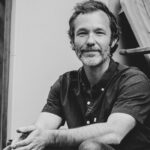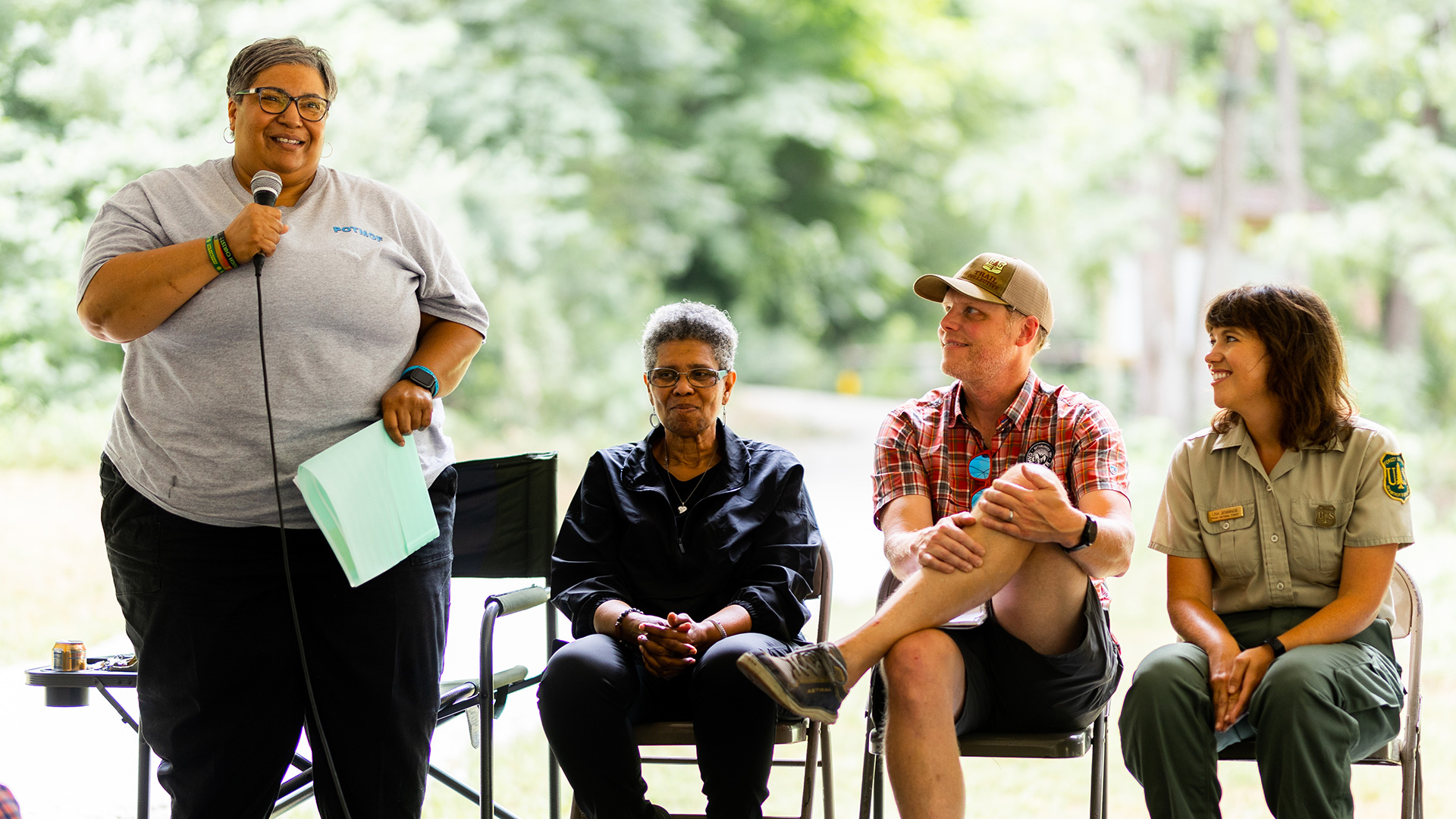
Old Fort’s New Start
How a diverse crew of community-minded visionaries is betting on outdoor recreation to blaze trails to a more inclusive future for a sleepy Western North Carolina town.
Not long after becoming executive director of Camp Grier — a nonprofit summer camp in western North Carolina — Jason McDougald realized its growth hinged on the financial health of the town it had called home since 1952.
Old Fort (pop. 815) was a thriving manufacturing hub in the 1960s and ’70s before cheap overseas labor gutted North Carolina’s textile and furniture belt, leaving behind skeletons of shuttered plants and destroying thousands of blue-collar jobs. The quaint, two-stoplight town two dozen miles east of Asheville has since struggled to regain its footing.
McDougald, the son of an outdoor store owner raised with both a principled appreciation for the integrity of public lands and a passion for mountain biking, climbing and paddling, saw economic potential in Old Fort’s most valuable but underutilized natural asset — Pisgah National Forest — which touches the town limits on three sides.
He contacted Lisa Jennings, recreation and trails manager for the U.S. Forest Service’s 192,000-acre Grandfather Ranger District, with a proposal to link the Blue Ridge Parkway to Old Fort by extending the tough-to-access Heartbreak Ridge Trail, a downhill track popular among hardcore mountain bikers.
Building a network of multiuse trails in Old Fort’s backyard, he believed, could help the community stage a comeback by creating both common ground and a sustainable employment pipeline.
“We wanted to bring Old Fort back to where it was 30 or 40 years ago by creating an outdoor recreation economy,” McDougald says. “And it became clear that adding another sector to the economy would require new infrastructure.”
Since the Forest Service relies on partnerships with private groups to build and maintain new trails, McDougald established the G5 Trail Collective (which stands for the Grandfather Ranger District’s five counties: McDowell, Burke, Caldwell, Avery and Watauga) to drum up volunteer support and, ultimately, funding.
“We wrote down ‘trails for all,' and it became our mantra. Because ultimately, it’s about making our public spaces welcoming and accessible for all members of the community."
Armed with input from local hikers, bikers, equestrians and anglers, he and Jennings sketched out a map with 15 miles of proposed trails to present at a 2019 Old Fort Community Forum meeting in the basement of a downtown Baptist church. McDougald sat next to Lavita Logan, co-founder and coordinator of People on the Move for Old Fort, a Black-led advocacy and engagement organization under the West Marion Community Forum Inc. umbrella. They bonded immediately.
When she heard her new friend’s pitch, Logan’s eyes lit up at the potential both to reconnect the local Black community to the forest and to hatch revenue- and job-creating businesses. People on the Move awarded a $75,000 grant to the G5 Trail Collective. The funding marked both the project’s first significant source of capital — which it used to cover costs of the National Environmental Policy Act (NEPA)’s extensive permitting and planning process — and a paradigm shift. Additional grants followed.
“My conversation with Lavita turned what was essentially a user-focused trails project into a community development project,” McDougald recalls. “And showing that the community believed in our idea enough to fund it helped build trust with the Forest Service. The changing of that lens was the catalyst for much of what was to come.”
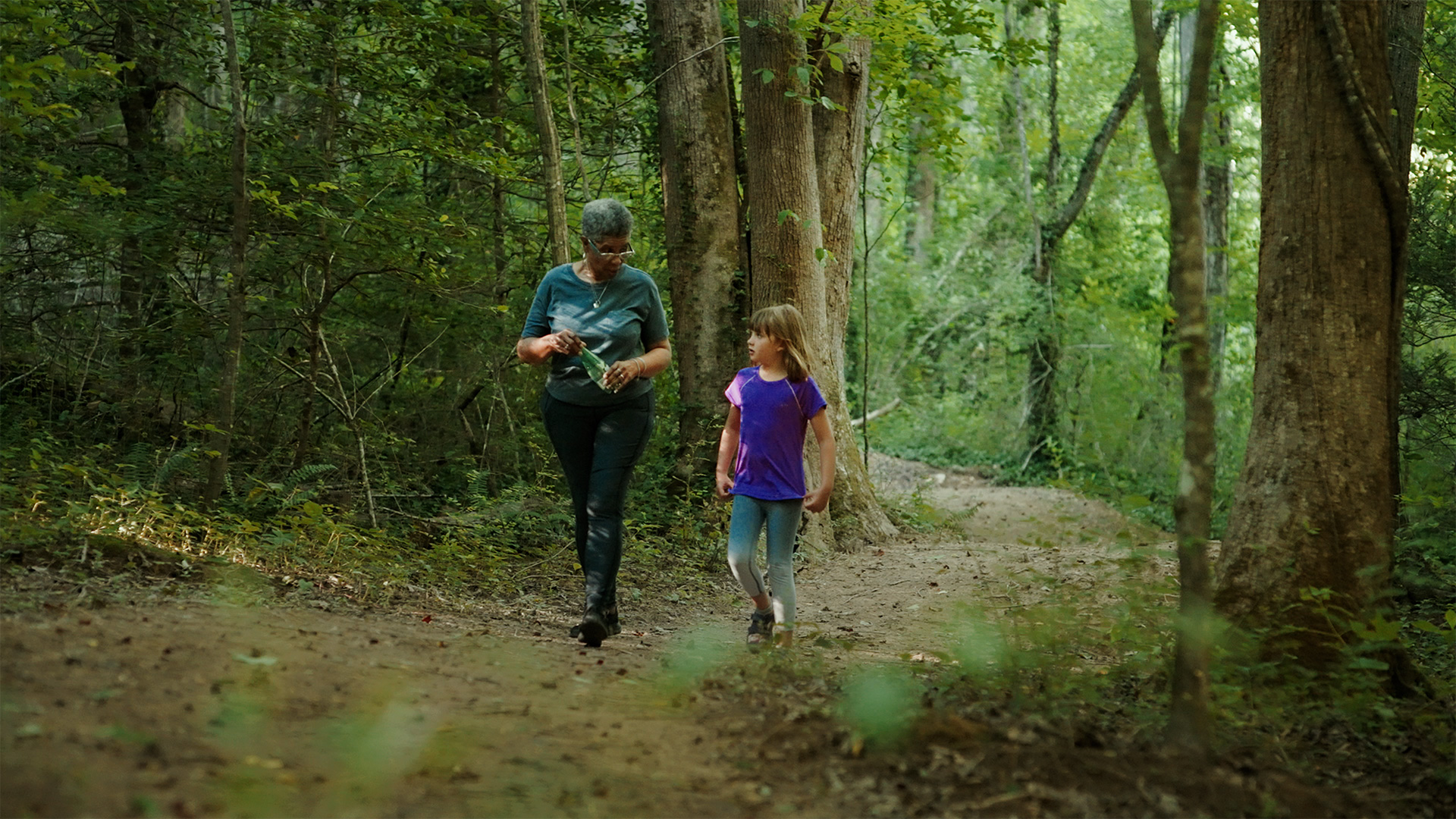
Trails for All
Shortly thereafter, a handful of private, public and nonprofit leaders met to discuss equitable economic development in Old Fort. How, they wondered, could the trails project affect community issues like education, affordable housing and small business development? Those conversations planted the seeds for what would become the Catawba Vale Collaborative.
At the meeting, Jennings sat with McDougald, Logan and Stephanie Swepson-Twitty, a lifelong Old Fort resident and CEO of Eagle Market Streets Development Corp., a nonprofit promoting economic equity through real estate investments and small business funding in Black communities across North Carolina.
“We wrote down ‘trails for all’, and it became our mantra,” Jennings remembers. “Because ultimately, it’s about making our public spaces welcoming and accessible for all members of the community. While each of us has our own lane, we are all pointing toward the same destination.”
An important part of offering trail experiences for users representing a diversity of backgrounds and abilities, Logan says, is eliminating the stigma minorities associate with the outdoors. During the Jim Crow era, parks, campgrounds, beaches and other public recreation spaces were segregated.
“It’s hard to get Black people out in the woods, given the history. The old people would often say the Bogeyman’s out there. We hope to overcome that.”
“It’s hard to get Black people out in the woods, given the history,” she explains. “The old people would often say the Bogeyman’s out there. We hope to overcome that.”
Diversity, equity and inclusion are a part of Camp Grier’s DNA. Each year, full scholarships go to 100 campers.
“We’ve always focused on getting a diverse cross section of kids outside and closing a gap created through institutional hatred, but have operated a bit on an island,” McDougald says. “We saw community partnership as a way to help heal those wounds.”
In 2021, Camp Grier hosted the inaugural Outdoors for All summit to explore pathways to a more equitable and inclusive community and reimagine the face of outdoor industry leadership.
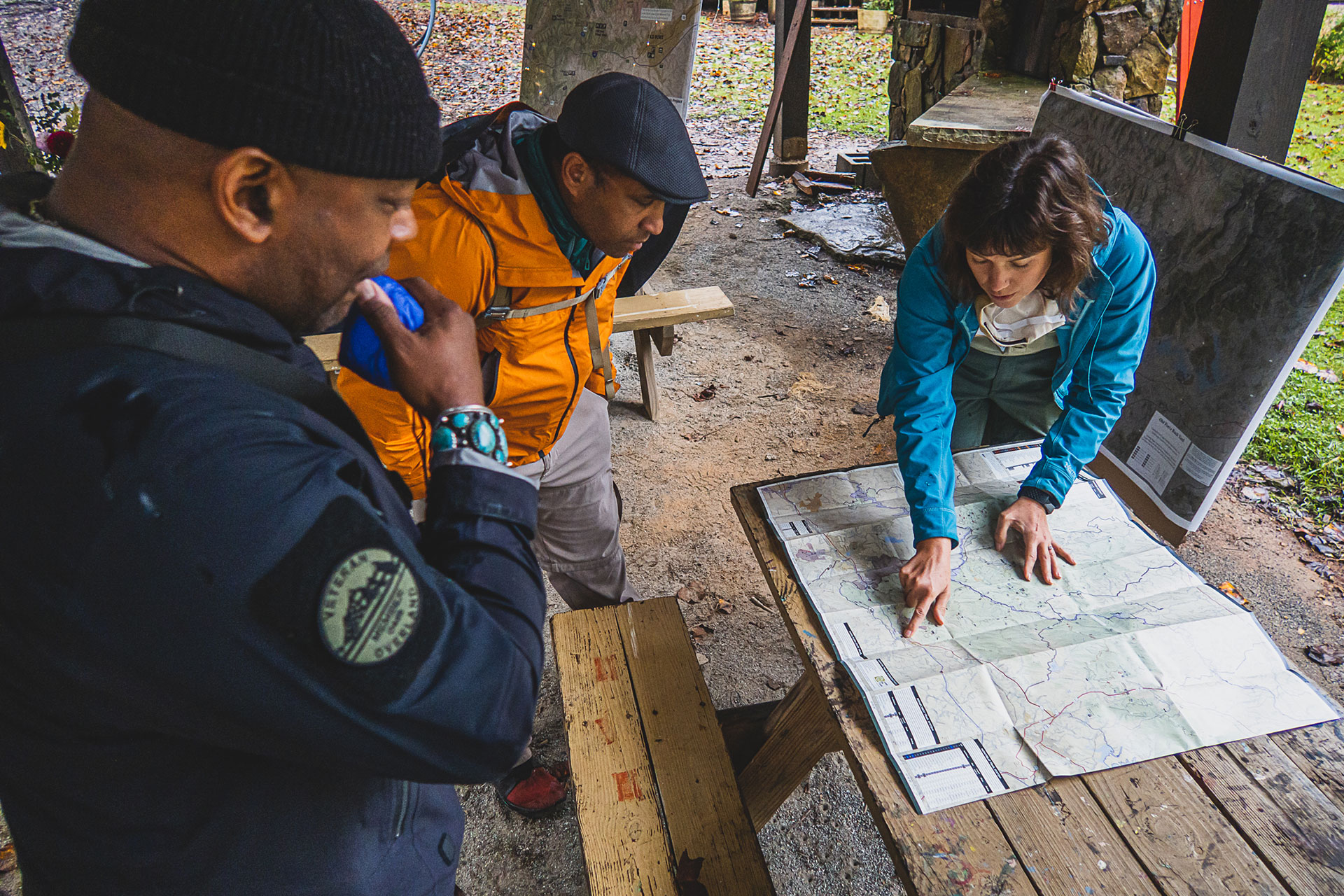
Lifting Up, Not Pushing Out
Swepson-Twitty smiles while reflecting on the energy and optimism of those first gatherings.
“We became an unofficial planning and zoning committee, but our approach was more productive because we each had an equal seat at the table and were all guided by a voice asking what the community wanted,” she says. “It showed what could happen when a group of people from diverse backgrounds comes together to dream big about the future.”
Finalizing the trails proposal was an iterative process. The collective hosted more than 20 meetings, leading to more than 30 revisions of the map. Last November, the Forest Service approved 42 miles of all-purpose trails to be built on 70,000 acres of public land at the base of Mount Mitchell, the tallest peak east of the Rockies. The first six miles opened to the public in June, and plans are to build five or six miles each year through 2029.
“My personal view as a public servant is that public land should reflect the interests of the towns it surrounds and the towns that serve it.”
“My personal view as a public servant is that public land should reflect the interests of the towns it surrounds and the towns that serve it,” Jennings says. “Our job is to make sure we can do that in a way that is sustainable on the land.”
From the beginning, the team wanted the recreation economy they envisioned to lift up — not push out — communities of color. The booming popularity of mountain towns like Jackson Hole, Boulder and Asheville — each of which draws millions of affluent, outdoorsy tourists and transplants — has led to skyrocketing living costs that have priced out many and gentrified historic communities.
“I felt that with the trust we were building, we had a real opportunity to not repeat those things,” McDougald says.
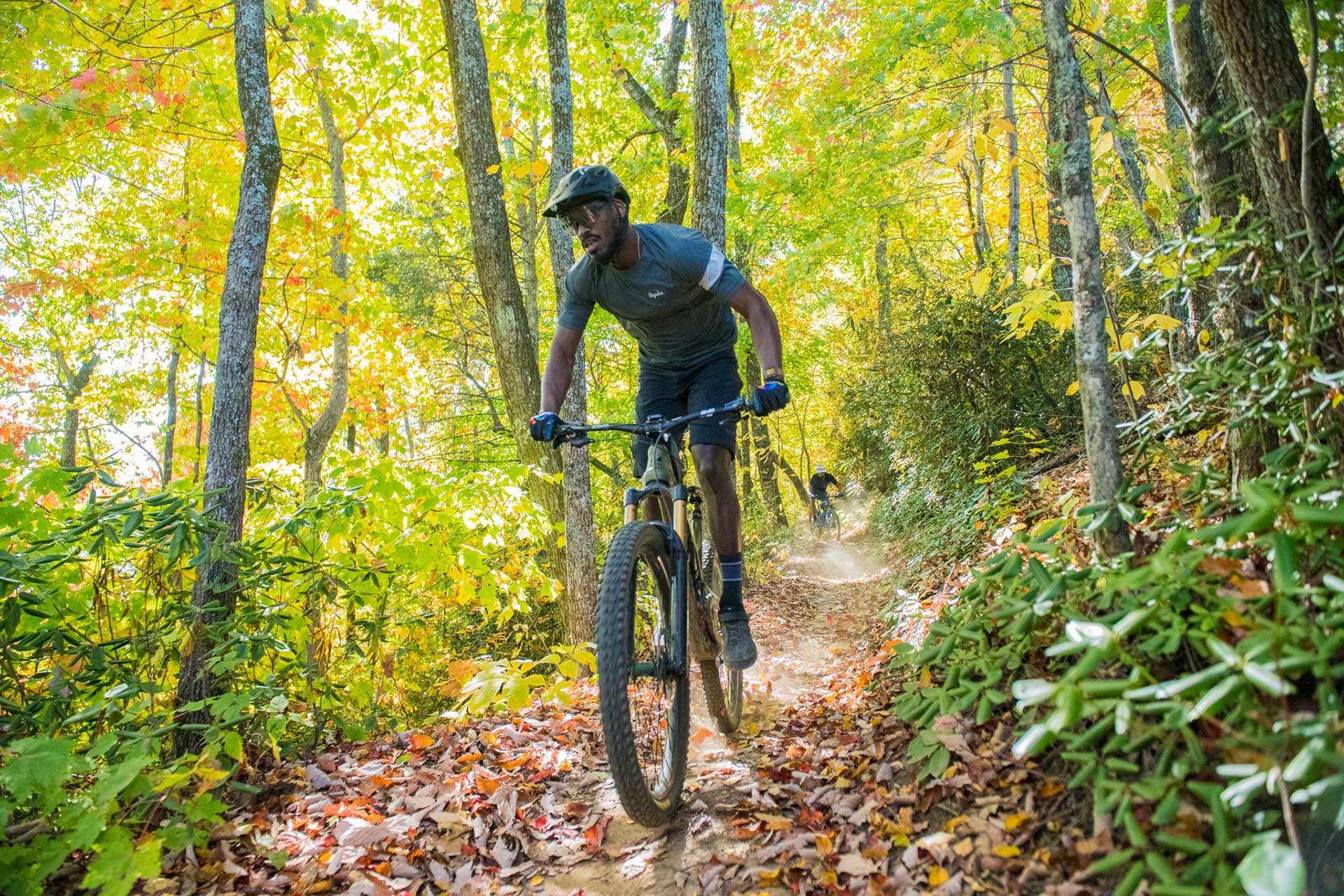
Building a Diverse Workforce
Growing up in Old Fort in the 1970s, Logan was the only Black girl in her Girl Scout troop. The Pisgah National Forest was her playground of choice, where she and her sister would build forts and play for hours.
“We were outside kids,” she says. “In the summer, I don’t even remember coming home to eat lunch. We played in the woods all day until my daddy got home from work to take us swimming in Curtis Creek. I just loved camping and just being outdoors … and a lot of other Black people did, too.”
She has equally fond memories of her hometown’s heyday.
“We had two grocery stores, a few restaurants, a clothing store and even an arcade — everything you needed,” recalls the third-generation Old Fort native.
That changed in 1985 when the United Merchants textile plant halted production, triggering a domino effect in Old Fort’s manufacturing sector in the 15 years that followed. In 2019, an Ethan Allen furniture factory shuttered after 48 years. That same year, Logan — whose parents had worked at United Merchants — left her job of 31 years at the town’s last remaining plant, Auria Solutions (formerly Collins & Aikman), which manufactured auto parts.
“Dad always stressed the importance of ownership and being able to gain resources that would inevitably lead to wealth for your family. But growing up here as a person of color, I didn’t have examples of that in my community.”
Swepson-Twitty’s mother worked on the Collins & Aikman assembly line, and her father was the first Black Occupational Safety and Health Administration compliance officer in the state of North Carolina.
“Dad always stressed the importance of ownership and being able to gain resources that would inevitably lead to wealth for your family,” she says. “But growing up here as a person of color, I didn’t have examples of that in my community.”
As a kid, she fell in love with writing and public speaking. She dreamed of becoming a journalist.
“I believed everyone in that industry had money, so I followed the gnaw inside me to empower others to have economic mobility,” says Swepson-Twitty, who studied finance a few miles west at Montreat College and eventually parlayed a banking career into community development in 2008 when she became president and CEO of the Eagle Market Streets Development Corp.
The nonprofit helped revitalize “The Block” — a once-prosperous hub of Black commerce and culture in downtown Asheville whitewashed by urban renewal policies between the ’50s and ’80s — and is now working with People on the Move to bring a similar model to Old Fort. In the last year, Eagle Market Streets has purchased two commercial buildings downtown and a multifamily residential property in the historically Black Cemetery Street neighborhood. The plan is to provide affordable options for minority entrepreneurs, businesses and first-home buyers.
The group is also taking steps to build and support a diverse workforce for Old Fort’s budding outdoor-recreation ecosystem, including partnering with McDowell Tech Community College to launch a trail-building curriculum and creating a summer internship program for local Black and Latinx students through the National Park Service’s Youth Conservation Corps. Camp Grier is developing lodging for seasonal workers.
“Because if we don’t think about how we can bring diversity and equity into everything we do, we’ll be just like those other mountain towns,” Swepson-Twitty says.
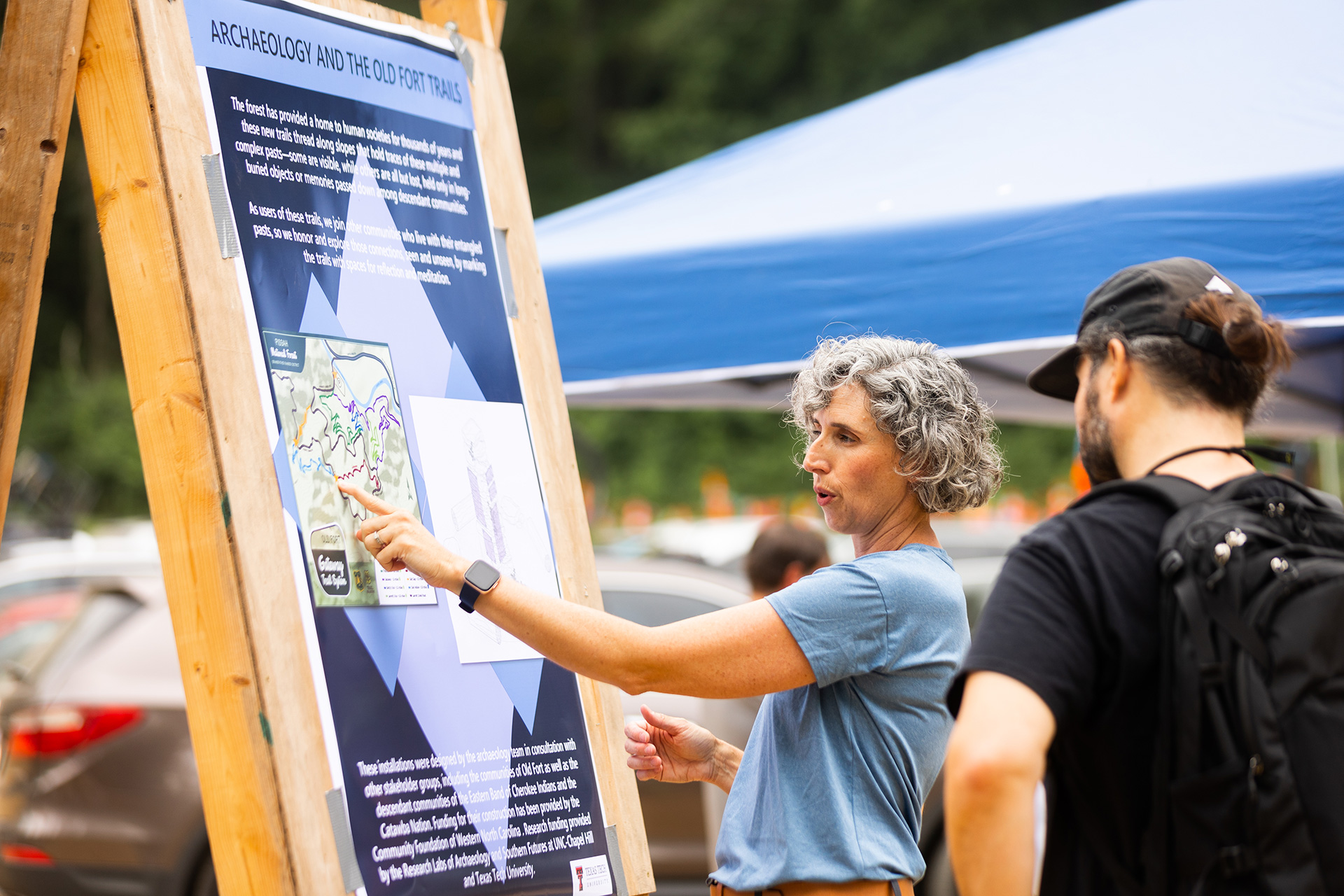
Acknowledging the History
Old Fort, one of the oldest towns in western North Carolina, is known as the gateway to the Blue Ridge Mountains. It prides itself on its historic roots. Yet beneath its natural beauty and folksy charm lies a textured story of division and injustice.
Built by the colonial militia in 1756 as the westernmost outpost of white settlement to battle Cherokee and Catawba tribes, it became known as Davidson’s Fort when Samuel Davidson purchased the square-mile tract of land around 1770. After the Cherokee nation killed Davidson in 1776, North Carolina Colonial Militia Gen. Griffith Rutherford retaliated by leading a 2,400-man charge to burn more than 30 Cherokee villages.
More than a century later, 3,000 incarcerated former slaves spent 11 years bringing the Western North Carolina Railroad to Old Fort — sacrificing hundreds of lives blasting through rock so that commerce and people could flow freely throughout the state.
Now, two archaeologists — Jennifer Gates-Foster from the University of North Carolina Chapel Hill and Chris Whitmore from Texas Tech University — are working to tell the story of the land’s past to avoid repeating it, and to reconnect diverse communities to their ground and to each other. The NEPA Act requires extensive archaeology work — including reviewing census and land grant records to document traces of human activity and assess impacts of construction — before building new trails on public lands.
“Many Southerners want to romanticize history and often overlook pieces — from indigenous populations being forced off the land, to slavery and civil rights struggles. I’m not one to dwell on history, but I don’t want to bury it, because I believe our past informs where we are today and where we can be tomorrow.”
“It’s not our jobs simply to document the past, but to help create meaning and a deeper understanding of the complex relationships that have existed between different communities,” Gates-Foster says. “We start by listening to members of the local community and empowering them to tell stories that matter to them.
Gates-Foster and Whitmore were intrigued to learn how traditional European colonial settler narratives, which have dominated communities in western North Carolina, seem to be shifting.
Stone monuments placed along the trails will share details of Old Fort’s Black and indigenous heritage.
“Many Southerners want to romanticize history and often overlook pieces — from indigenous populations being forced off the land, to slavery and civil rights struggles,” Swepson-Twitty says. “I’m not one to dwell on history, but I don’t want to bury it, because I believe our past informs where we are today and where we can be tomorrow.”
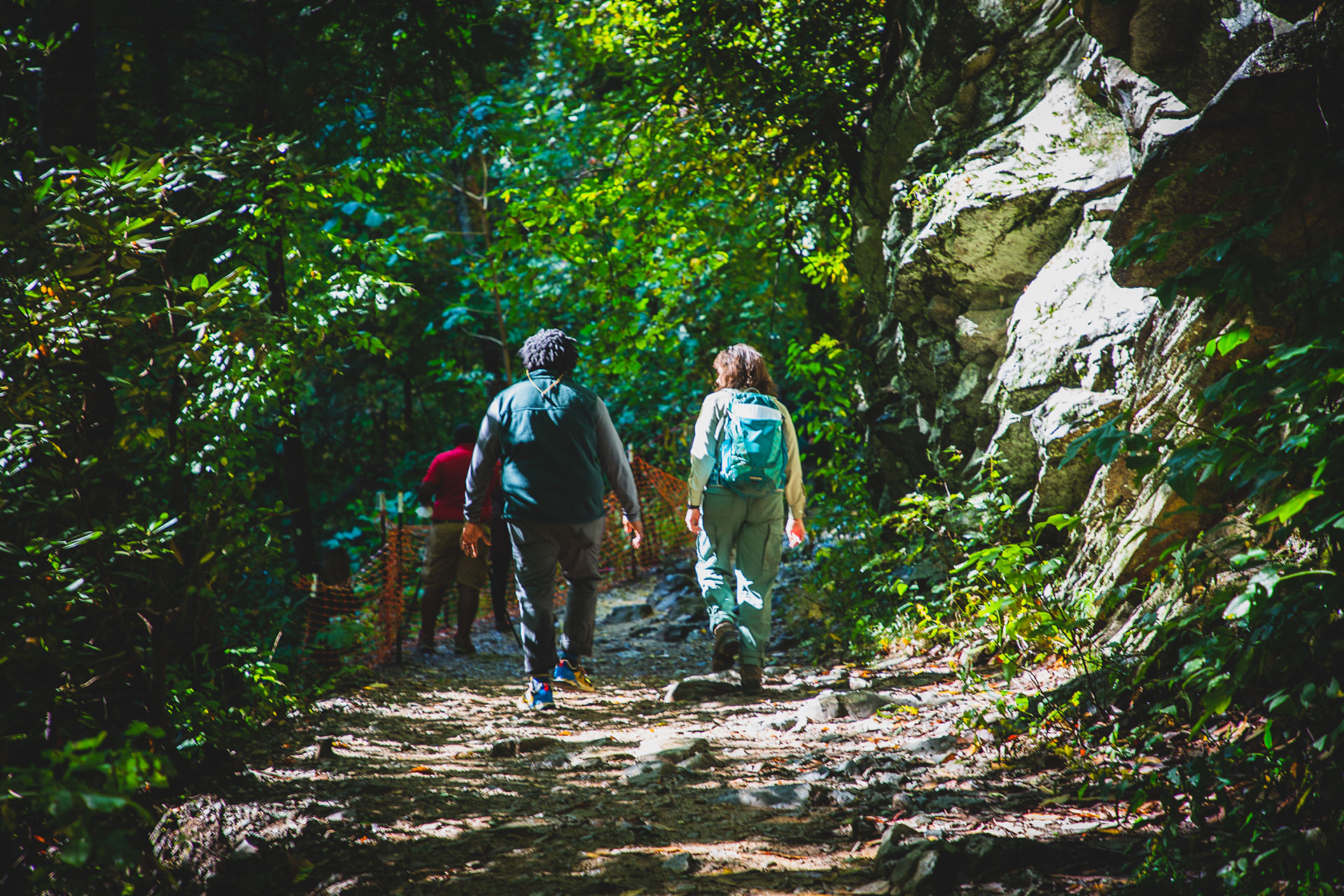
Jay Moye is a writer, editor and musician based in Asheville, North Carolina.
About the author
Jay Moye is a writer, editor, and musician based in Asheville, North Carolina.

